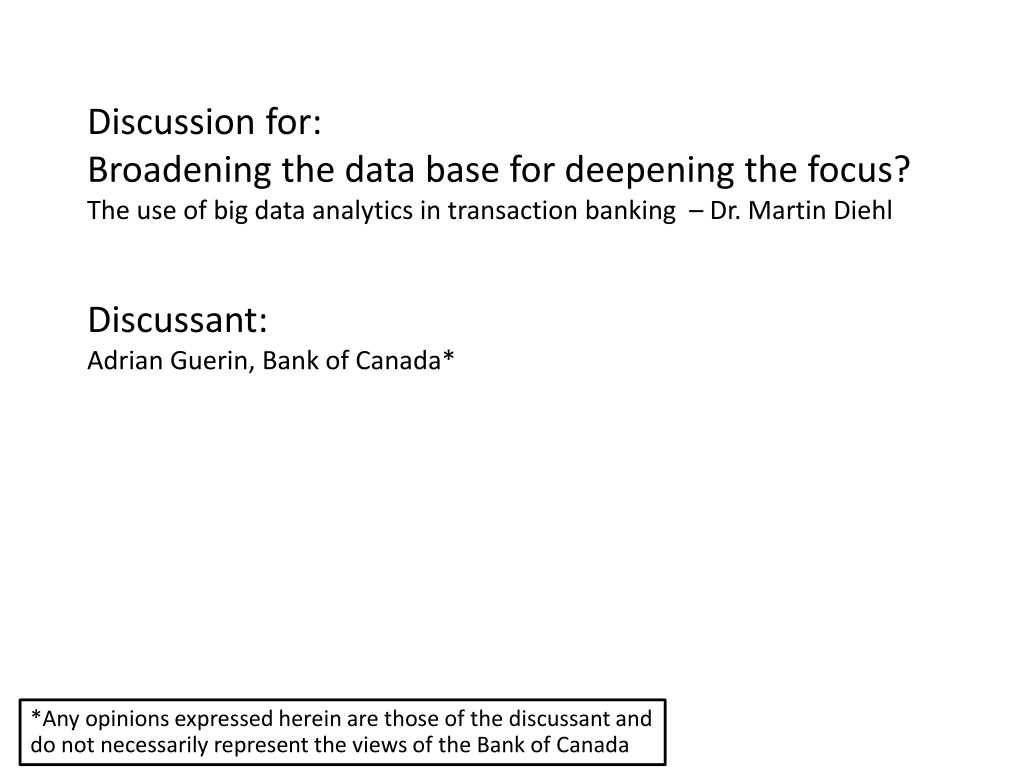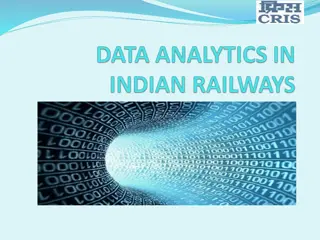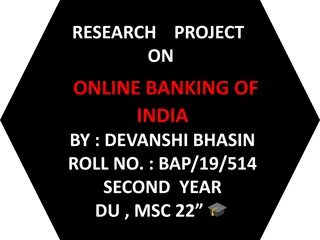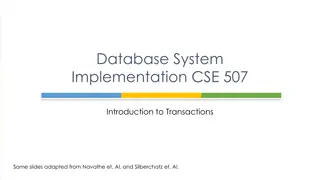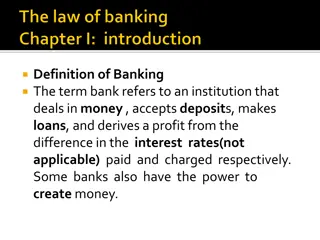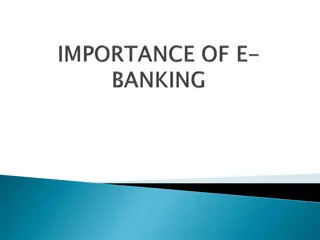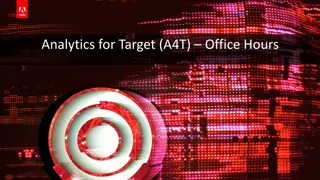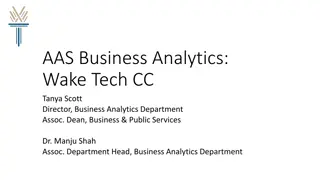Exploring the Potential of Big Data Analytics in Transaction Banking
Big Data Analytics (BDA) offers valuable insights in transaction banking through varied data sources and methods like Supervised, Unsupervised, and Reinforcement learning. Use cases include anomaly detection, fraud detection, default prediction, forecasting, and sentiment analysis. Discussions also touch on the challenges and opportunities of data mining in enhancing transaction banking data analyses, emphasizing the evolving nature of Data Science and its application in both private and regulatory sectors.
Download Presentation

Please find below an Image/Link to download the presentation.
The content on the website is provided AS IS for your information and personal use only. It may not be sold, licensed, or shared on other websites without obtaining consent from the author. Download presentation by click this link. If you encounter any issues during the download, it is possible that the publisher has removed the file from their server.
E N D
Presentation Transcript
Discussion for: Broadening the data base for deepening the focus? The use of big data analytics in transaction banking Dr. Martin Diehl Discussant: Adrian Guerin, Bank of Canada* *Any opinions expressed herein are those of the discussant and do not necessarily represent the views of the Bank of Canada
Presentation Overview Introduction to Big Data Analytics and methods Use cases in financial industry Available data in transaction banking Overview of existing areas of research Potential applications for central banks
Summary: Big Data Analytics More data, different types, speed, accuracy, and value. Variety of sources internet, devices, corporate systems, infrastructures. BDA: combination of Data Mining and Machine Learning Methods. Methods: Supervised learning Unsupervised learning Reinforcement learning
Summary: Use Cases, Transaction Banking Existing use cases Classification: Anomaly detection and fraud detection Default prediction Forecasting: Market returns, risk indicators Sentiment analysis Potential use cases Predict RTGS liquidity needs (participant or system) Forecast consumption
Comments Thank you: presentation highlights analytical opportunity BDA (Data Science) an evolving field, skills in short supply Applied most notably in private sector (e.g., Google, Amazon, IBM). Proliferation of DS training (university level, certificate). Content is timely DLT or blockchain technology: potential for wealth of data provided to central banks and regulators Possible regulator node with full ledger visibility (near real-time data). Example initiatives: ASX examining DLT option with DAH for CHESS replacement DTCC partnered with IBM, Axoni, R3 to build DLT solution for derivatives post- trade processing (re-platform DTCC s Trade Information Warehouse)
Comments/Questions Overview of primary methods very helpful as introduction Light touch on data scraping/mining and NLP, but appropriate given it may not be useful in payments systems context. Questions: Data assessment (available data) Are there opportunities for data mining to complement transaction banking data and analyses? Can we confidently use unofficial statistics acquired through data mining? Comment, unsupervised learning: Can be challenging to set up (e.g., k-means, how many clusters appropriate) and interpret (are there natural groups?).
Comments/Questions AI methods as black box Comments: Agree, must (continue to) be vigilant of model risk. Can measure performance of ML algorithms (e.g., confusion matrix for supervised learning), but May create false sense of confidence. Are test/train data representative, contain outlies? Where are the false negatives? Question/Comments: Feature selection Key ML objective is to maximize measured model performance. Does this create a risk similar to in econometrics with kitchen sink models and the search for statistical significance? Do the techniques lend themselves to overreliance on such measures is this a risk for feature selection (might we improperly leave something out)? ML methods are smart , but continue to rely on data inputs; feature selection and lookback period / sample data considerations are important.
